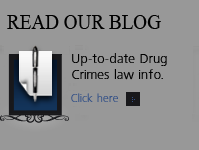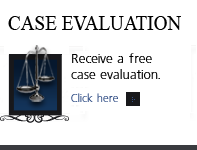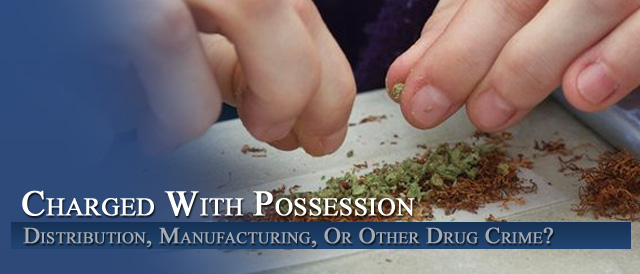
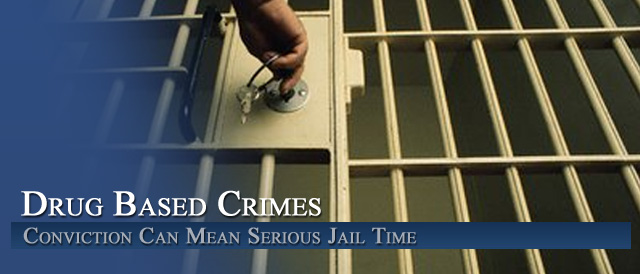
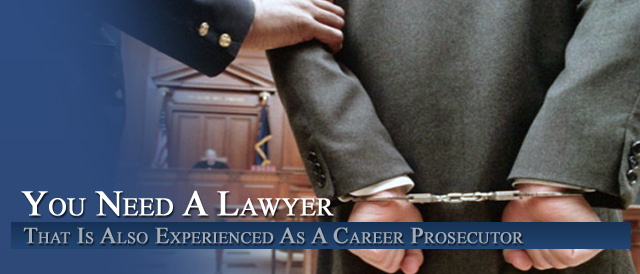
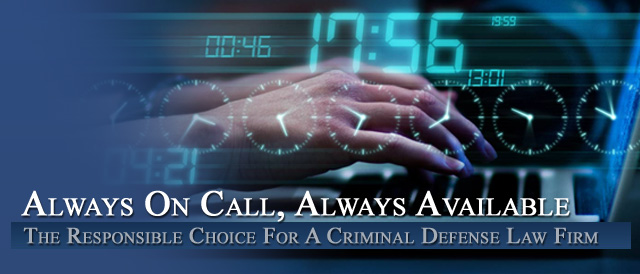
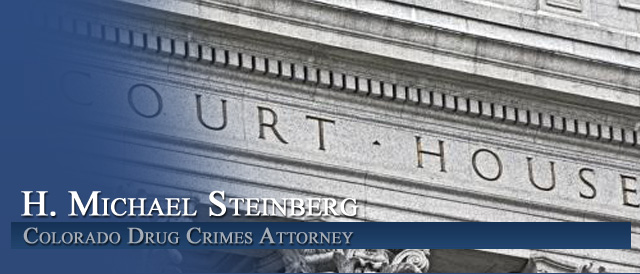
Denver Colorado False Identication Cases, Law And Tactics – The Dangers of Eyewitness Testimony
Introduction – The devastating affect of an eyewitness pointing to the defendant in a criminal case cannot be overstated. However, every criminal lawyer –defense or prosecutor – knows just how weak this evidence truly is notwithstanding its impact on the jury. This article addresses either keeping out or attacking in court identification testimony.
The In-Court Show-Up
One of the most suggestive forms of identification procedures is the in-court identification.
With an in-court show-up, the witness (after being informed that the prosecutor and police had enough evidence to arrest and charge the defendant, and perhaps after being told of the defendant’s criminal history and congratulated on his part in taking the defendant off the streets) is asked to look around and see if anyone in court looks like the person who victimized him.
Especially at a sparsely attended preliminary hearing or other pre-trial hearing, there is little mystery who the witness will pick: not the prosecutor he just met, or the police officer who has shepherded the witness through the process, or the man in the black robe, or even the stranger in a suit with the briefcase and legal pad at the defense table. The witness’s gaze inescapably fixes on the shabbily dressed man sitting next to the defense attorney.
Trying To Divert An In Court Identification
The law is relatively clear on two points:
• Whether to grant relief lies in the trial court’s discretion.
• Attempting a ruse to avoid the Defendant’s identification (e.g., seating him in the audience and a decoy at counsel table, or disguising him) may be grounds for discipline against the lawyer (noting that such a ruse violates both DR 7-106(C)(5) and Model Rules 3.3 and 3.4 as an attempt to mislead the court).
A possible alternative to avoid a suggestive identification procedure is the goal.
There are many appellate opinions acknowledging the suggestivity of the traditional in-court identification and indicating receptivity to alternatives.
Some courts have held that it is unduly suggestive to ask witness to identify perpetrator in the courtroom when it was clear who was the defendant.
What Options Exist For The Defense Lawyer?
• Seek to excuse Defendant entirely from the hearing. Since the right to attend is the defendant’s, a request to be excused from pre-trial hearing should be granted in an identification case.
• Ask to seat the Defendant in the audience and a decoy at counsel table during the eyewitness’s testimony. among allowable procedures for lessening suggestiveness of pre-trial identification are pre-hearing line-up or having defendant sit in the audience. This works best if the decoy matches the description that the witness provided the police and the audience contains many others who resemble the Defendant.
• Request that a line-up be conducted in court. But remember, recommending that trial judge use its discretion to grant defense request where identification is a serious issue.. and probably won’t be permitted.
• The last option would be to put a bag over Defendant’s head. This is demeaning, and it permits the witness to study Defendant’s carriage and dimensions. However, this might be tried if no other option is available…won’t work!
Things To Consider:
Consider how to handle the prosecutor and police in making his motion. The Defense lawyer may want to ask the DA to agree to one of these procedures before you ask the judge so that if they refuse, at trial the lawyer can make it seem that they wanted to hide the truth by avoiding a fair, non-suggestive identification procedure.
In any event, the lawyer should ask the Court to direct the prosecutor and police that they should not discuss with the witness the arrangements that have been made in court. The Colorado Criminal Defense Lawyer should evaluate his judge and consider how best to make the request.
That is, should the lawyer should include this request in the motion and proposed order or maybe it should be added orally. The court should grant the motion (saying, “Of course, the prosecution and Officer Smith should not discuss with the witness that the defendant will not be at counsel table or anything about these arrangements.”).
The Motion Should Be Made Before the Pre-Trial Hearing
Just as with any other in-court demonstration, do not attempt an alternative to the in-court show-up for the first time before a jury, do it earlier – at the pre-trial hearing on motions.
Any plausibility the argument for misidentification will disappear once the witness picks the Defendant out of the audience or in an in-court line-up arranged at his insistence.
Therefore, make his motion at a pre-trial hearing, not at trial.
If there is no identification, the criminal defense lawyer has scored a tremendous victory, whereas that same lawyer might still be able to explain away the identification at trial (the police might have pointed out the defendant, the witness might have been already prejudiced by an in-person or photographic show-up).
Motion to Suppress Identification Testimony
Obtaining a pre-trial hearing on a motion to suppress an identification may yield great benefits besides the (unlikely) suppression of the identification.
If the lawyer can show that the identification procedure was unduly suggestive, the burden shifts to the prosecution to prove that under the totality of the circumstances, the identification was reliable.
Making this showing may compel the prosecution to call the victim as a witness and open him to cross-examination on all the circumstances surrounding his observation of the defendant at the time of the offense and his identification.
Questioning The Identification Procedure – Cross – Examination of the Officer at the Hearing
Efforts here should be on laying the groundwork for a trial cross-examination or for the Defendant’s own expert witness to testify on the factors that emerged at the hearing.
If the police preserved the array or photographed or videotaped the line-up, the Court often will base its findings regarding suggestiveness on the array or line-up itself.
Questions and Areas to explore at this hearing typically include:
• Suggestions that may have been made to the witness:
• Did you or any other officer speak with the witness before the line-up?
• What did you tell him was going to take place that day?
• Did you tell him that you had arrested someone?
• If not, what did you tell him about why he was viewing a line-up?
• Did anyone accompany the witness?
• Did you hear them have any conversation about what happened the day of the offense?
• Did you hear the witness describe the perpetrator to any other officers?
• What did you say to the witness as you were showing him the line-up?
• What did he say to you?
• Did anyone else say anything to him before he made an identification?
• How much time went by before he made the identification?
• How do you know that—did you time it? With what? Did you record the time anywhere? Did any other officer?
• What did you say to the witness after the identification?
• What did he say?
• Did you smile at him?
• Pat him on the back?
• Did anyone else say anything to him in his presence?
If the witness testifies, go through the same with him.
• You didn’t audiotape his discussion with the witness?
• You do have tape recorders in his precinct?
• And even video recorders?
• You didn’t use either, did you?
• Descriptions of the perpetrator.
• Did the witness describe the assailant to you?
• What was that description?
The lawyer should go through every physical attribute you can imagine and exhaust everything the witness might have said about the attribute… and never settle.
• Did he say anything more about the assailant’s hair color/hair style?
• So he didn’t say anything about the assailant being bald?
• Did you ask?
• And he didn’t say anything about the assailant wearing a hat?
• Did he say anything more about the shade of the assailant’s skin color? Weight? Height?
Age?
• So anything the witness told you about the assailant’s description, you put in his report?
• If he told you anything more about the assailant’s description [go feature by feature—skin color, age, height, weight, build, facial hair, hair style, clothing, etc.], you would have put it in his report, right?
• Did you put anything in notes that did not make it into the report?
• Did you tell any other officers anything about the description that did not make it into the report?
• As you sit here today, there is nothing you can remember about the description that is not in his report?
• In fact, his memory about what the witness said is based entirely on what’s in his report?
Examining the Eyewitness at the Hearing
At a pre-trial hearing, you want to ask for as much detail as possible about anything relevant to the identification. You want to hear the good and the bad to know what awaits you at trial.
Areas of questioning here include:
• Any prior acquaintance with the perpetrator.
• Distractions immediately before the event.
• On what the witness focused during the event.
• The duration of the event.
• Everything the witness noticed about the perpetrator.
• The description the witness gave to the police, and all he omitted.
• All the details about any pre-trial identification procedure:
• What was said to him before and after.
• His certainty.
• How long he took to make an identification.
• Why he picked the person he did.
• Whether he thought anyone else in the line-up or photo array could be the perpetrator.
Witness Examination at Trial – Attacking Credibility
The Witness’s Credibility
While the defense of misidentification alleges mistake rather than falsehood, anything that makes the witness less believable and less attractive to the jury will diminish the jury’s sympathy with the witness and its likelihood of giving him the benefit of the doubt.
Therefore, th lawyer should not hesitate to point out the witness’s criminal history or prior inconsistent statements.
Inaccurate Descriptions
This is a safe area because the lawyer will rely on the report the police wrote of the description, probably soon after the event. All the factors the prosecution cites in favor of believing the victim—his desire to see the culprit caught, the focus which the stress of the event brought to him at the time of the crime—also suggest that any description he gave to the possible would be as accurate as possible.
Here Are Some Good Questions
• You called the police on his cell phone as soon as the robber turned the corner?
• And the police arrived within five minutes?
• You called them because you wanted to see the robber caught?
• Officer Smith asked you to describe the robber?
• You gave as accurate and complete a description as you could so that the robber would be caught?
• You described the robber as African-American?
• You didn’t say whether his complexion was dark, fair or somewhere in between?
• Officer Smith did ask you to describe the robber’s complexion, didn’t he?
• If you had noticed the robber’s complexion, you would have told Officer Smith, right?
• But you didn’t?
• Officer Smith left you with his card?
• You never called him to add more information about the robber’s appearance than you gave on the night of the robbery?
• You met with Officer Smith to view some photographs on June 1, just one week after the robbery?
• He pulled out a big book for you to look through?
• Before he opened the book, you didn’t say, “Just show me photos of dark-skinned African-American men,” did you?
• Look at my client. Would you agree that his complexion is noticeably darker than most African-American men?
• Well, he’s noticeably darker than any African-American individuals you see in this courtroom, isn’t he?
• And you never described the robber to the police as a noticeably dark in skin complexion?
Avoid Questioning About Certainty
Unless you have a helpful statement memorialized in a report or prior testimony, avoid questioning on witness certainty.
By the time of trial, whether consciously or not, the witness is invested in his identification and will express it with a certainty that his questioning on this point will only emphasize. Jurors mistakenly tend to defer to a witness’s statement of certainty.
Be Cautious About Questioning About Duration
Question on the duration of the event only with great caution.
Studies show that witnesses commonly overestimate the duration of stressful events, like a crime. An event that took two seconds becomes twenty, enabling the prosecutor to tick off twenty-seconds of silence to the jury in summation to show how long a time that is.
If you can, try to back into this by questioning about what did not happen during the crime. If you are fortunate, you might exploit a witness’s admission that he did not notice a particular feature because of the event’s brevity.
Consider the following types of questions:
• The robber told you to give him his money?
• You opened his purse to get the money out, right?
• He snatched the whole purse from you?
• He didn’t give you time to take out his money?
• That purse was a favorite of hiss, wasn’t it?
• Losing the purse may have hurt more than losing the money?
• You didn’t get time to say to him, Hey, I’ll take the money out?”
• Is it fair to say that you didn’t get time to say anything before he snatched the purse?
• And he didn’t take time to look through the purse, did he?
• Just took off and ran, right?
• As you said on direct, you didn’t even have time to notice if he had any facial hair, right?
• When asked for the money, his face could not have been more than two feet from hiss?
• And when he snatched the purse, he got even closer?
• If you had a good look at his face from that close, you would have noticed if he had a beard?
• Or a mustache?
Expert Testimony at Trial – The Trend Is to Allow – But It Is Up To The Judge
Whether courts will admit expert testimony on the weaknesses of eyewitness identification remains in “a state of flux.” Several new cases identify a trend toward admitting such testimony, or at least to give courts discretion to do so.
Many decisions upholding the exclusion of expert testimony rely on the unsupported assertion that eyewitness identification experts add nothing to what the jurors’ own common sense tells them.
Several recent decisions and studies confront this assertion and prove it wrong and support the belief that jurors mistakenly believe for example – that a witness faced with a weapon is more likely to be accurate in his identification when the opposite is true.
A good source of information on this topic is – Elizabeth F. Loftus, Timothy P. O’Toole, Catharine F. Easterly, Juror Understanding of Eyewitness Testimony: A Survey of 1000 Potential Jurors in the District of Columbia at 10-11 (witnesses commonly overestimate the duration of stressful events, but jurors tend to accept the erroneous estimate).
Develop Specific Basis for Misidentification
The trend to leaving the issue of the admissibility of expert testimony to the discretion of the trial court places the onus on defense counsel to demonstrate that:
• The issue of identification is central to the case.
• The expert’s testimony, rather than being a general lecture on the vagaries of eyewitness identification, relates closely to the specific circumstances of the case and why those circumstances might produce a misidentification.
A recent case held that a defendant who seeks the admission of expert testimony must make an on-the-record detailed proffer to the court, including an explanation of precisely how the expert’s testimony is relevant to the eyewitness identifications under consideration. The offer of proof should establish the presence of factors (e.g., stress, or differences in race or age as between the eyewitness and the defendant) which have been found by researchers to impair the accuracy of eyewitness identifications.”);
United States v. Mathis, 264 F.3d 321 (3d Cir. 2001) (testimony should have been admitted to explain influence of viewing an earlier, single photograph of the defendant and of seeing a weapon during the crime);
People v. Williams, 14 Misc.2d 571, 830 N.Y.S.2d 452 (NY Sup. Ct. Kings Co. 2006) (admitting expert testimony on the issues of (1) cross-racial identification, (2) weapon focus, (3) exposure duration, (4) confidence malleability (i.e., the extent to which police feedback increases a witness’s confidence in his identification), (5) mug shot exposure, and (6) lack of double-blind line-ups).]
Therefore, the criminal defense attorney should plan his discovery, factual investigation to elicit those facts that experts deem conducive to misidentification:
fear
focus on a weapon
racial differences between the witness and the defendant
any police confirmation that the witness made the correct identification
exposure duration
the failure to use better out-of-court identification procedures,
and the passage of time.
[See www.seweb.uci.edu/faculty/loftus/ (Professor Elizabeth Loftus website with CV and articles); www.psychology.iastate.edu/faculty/gwells/ (website of Professor Gary Wells).]
Witness Confidence
Studies have singled out witness confidence as an unreliable predictor of an identification’s accuracy.
The basic problem about testimony from memory is that most of our recollections are not verifiable. The only warrant for them is our certitude, and certitude is not a reliable test of certainty. …
The mere fact that we remember something with great confidence is not a powerful warrant for thinking it true. … Jurors, however, tend to think that witnesses’ memories are reliable (because jurors are confident of their own), and this gap between the actual error rate and the jurors’ heavy reliance on eyewitness testimony sets the stage for erroneous convictions when (as in Newsome’s prosecution) everything depends on uncorroborated eyewitness testimony by people who do not know the accused.
Form More Information On This Topic – Go To The Innocence Project …
Good Luck… H. Michael
Other Articles of Interest:
- Part IV – Understanding Colorado Criminal Law – Authority of Colorado Police and Law Enforcement – Identification of the Suspect – ID
- Part II – Understanding Colorado Criminal Law -The Authority of Colorado Police and Law Enforcement – QUESTIONING OF A SUSPECT AFTER THE STOP
- Colorado Criminal Law On Miranda Warnings – When Are You Under Arrest And In Custody In Colorado
- Miranda Warnings – When Are You Under Arrest And In Custody In Colorado – Criminal Lawyer Series
- FAQ: Federal Expungements of Federal Marijuana Charges

